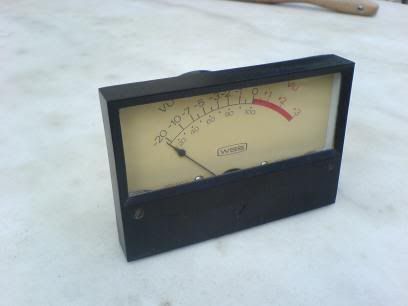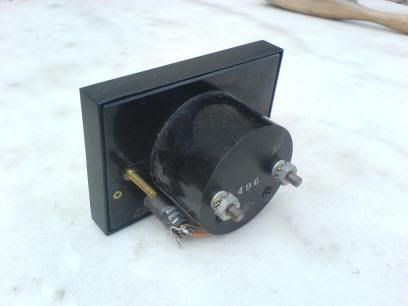SSLtech
Well-known member
I was approached recently by another lab member to see if I was interested in finishing off their LA-2a clone. They'd apparently built it about two years ago, and had bought some VERY nice parts for it: all orange-drop capacitors, all metal-film resistors, all new sockets, Par-metal case, Jensen transformers etc... -all very nice stuff.
Apparently it had never worked correctly, and they'd tried to troubleshoot it, and started taking bits apart to see about making it work correctly, but to no avail. Eventually they were more interested in getting out more or less what they'd put into it, and had lost interest in completing the project.
Since there was a recent thread about another lab member looking to buy an LA-2a but not necessarily looking to pay the $2,000 or so which the BLOO versions tend to sell for, I thought that this might make an interesting project.
So, I contacted the two lab members, the 'seller' agreed to sell me the unit, and the 'buyer' agreed to buy the unit after I've finished it. I bought the unit, and here's what arrived in the mail:
Front view:

A bit big and bold, and I'm not sure about those knobs... but nothing unworkable.
Rear view:
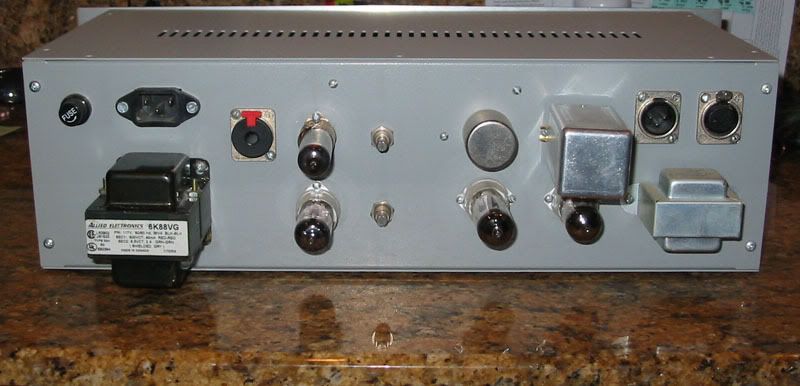
...pretty tidy, all things considered...
Inside view:

...not bad, but could maybe use tidying up a little.... -once it's fixed, of course!
So here's a shot of the knobs which I'm going to put on it... it's the exact same knob as is used on the Universal Audio reissue LA-2a's.

The meter has got a little bit banged up, hence my recent Ward-Beck Simpson meter post...

...And here's a picture of the patented SSLtech labeling transfer sheet...

FOr a start, the two handles are going to be done away with, and the pencil guide lines are obviously going to have to be removed. In addition, as part of the plan to make the front panel look a little more like the original units, I added a third hole for the meter switch... a 3-position dual pole rotary. This meant relocating the power switch down an inch or two, so I filled in the hole with a power indicator light, of the appropriate vintage. In addition, I added a hole for the compress/limit switch.
Here's a shot of the labeled front panel after varnishing, sitting on the unit while it dries...

Same again, without flash:

I could put a SIFAM meter on there, but it doesn't look 'period-correct' if you know what I mean...

Close-up of the power switch, light and metering switch:

And then it was on to repair the unit...
I did discover a couple of wrong wiring issues, and the 'bridge' circuit for the GR metering wasn't working at all well, but some of that may have been due to what was removed as a try to fix it...
Once it was all fixed and working, I tidied up the insides a bit, and neatened it up a little:

The back received some labeling, and some nice polished tube socket sheilds (apart from the 12BH7A, which I can't find a polished shield tall enough for, so it has a slip-on military-type tube shield):
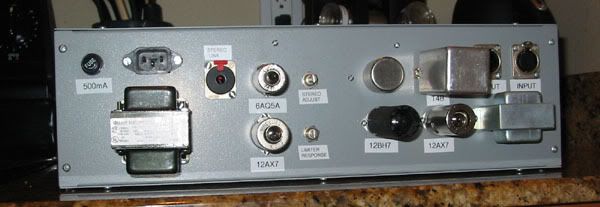
And here's the beauty shot next to my original Bloo:
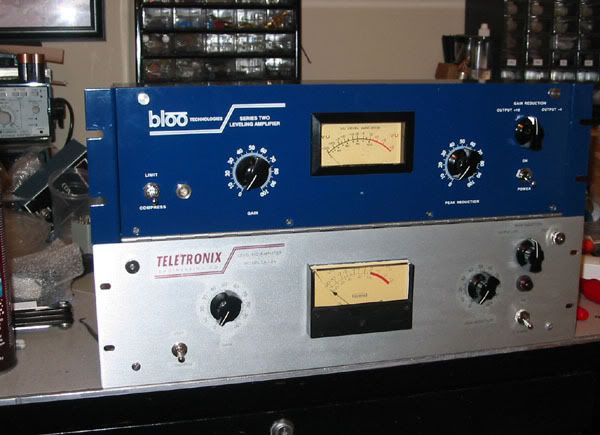
Oh, I've also added a couple of 'faux' thumbscrews in place of the top two handle-mounting holes... I think they look pretty good there!
It measures beautifully flat, and the compression characteristic looks right on the money. The only thing about it is that it's using Jensen transformers, and that means that the input sensitivity is way down (some would say that's a good thing) and also the peak reduction threshold sensitivity is also down quite a bit... I think I'll be switching the Jensens out for Edcors pretty soon... I've been VERY impressed with how the Edcors compare, indeed!
Well, there you have it... a quick photo-summary of a DIY unit which was languishing and got 'rescued'. It'll be on its way to its new owner's place after I've had a couple of weeks to live with it and make sure that it's not got any particular 'quirks'.
Keith
Apparently it had never worked correctly, and they'd tried to troubleshoot it, and started taking bits apart to see about making it work correctly, but to no avail. Eventually they were more interested in getting out more or less what they'd put into it, and had lost interest in completing the project.
Since there was a recent thread about another lab member looking to buy an LA-2a but not necessarily looking to pay the $2,000 or so which the BLOO versions tend to sell for, I thought that this might make an interesting project.
So, I contacted the two lab members, the 'seller' agreed to sell me the unit, and the 'buyer' agreed to buy the unit after I've finished it. I bought the unit, and here's what arrived in the mail:
Front view:

A bit big and bold, and I'm not sure about those knobs... but nothing unworkable.
Rear view:

...pretty tidy, all things considered...
Inside view:

...not bad, but could maybe use tidying up a little.... -once it's fixed, of course!
So here's a shot of the knobs which I'm going to put on it... it's the exact same knob as is used on the Universal Audio reissue LA-2a's.

The meter has got a little bit banged up, hence my recent Ward-Beck Simpson meter post...

...And here's a picture of the patented SSLtech labeling transfer sheet...

FOr a start, the two handles are going to be done away with, and the pencil guide lines are obviously going to have to be removed. In addition, as part of the plan to make the front panel look a little more like the original units, I added a third hole for the meter switch... a 3-position dual pole rotary. This meant relocating the power switch down an inch or two, so I filled in the hole with a power indicator light, of the appropriate vintage. In addition, I added a hole for the compress/limit switch.
Here's a shot of the labeled front panel after varnishing, sitting on the unit while it dries...

Same again, without flash:

I could put a SIFAM meter on there, but it doesn't look 'period-correct' if you know what I mean...

Close-up of the power switch, light and metering switch:

And then it was on to repair the unit...
I did discover a couple of wrong wiring issues, and the 'bridge' circuit for the GR metering wasn't working at all well, but some of that may have been due to what was removed as a try to fix it...
Once it was all fixed and working, I tidied up the insides a bit, and neatened it up a little:

The back received some labeling, and some nice polished tube socket sheilds (apart from the 12BH7A, which I can't find a polished shield tall enough for, so it has a slip-on military-type tube shield):

And here's the beauty shot next to my original Bloo:

Oh, I've also added a couple of 'faux' thumbscrews in place of the top two handle-mounting holes... I think they look pretty good there!
It measures beautifully flat, and the compression characteristic looks right on the money. The only thing about it is that it's using Jensen transformers, and that means that the input sensitivity is way down (some would say that's a good thing) and also the peak reduction threshold sensitivity is also down quite a bit... I think I'll be switching the Jensens out for Edcors pretty soon... I've been VERY impressed with how the Edcors compare, indeed!
Well, there you have it... a quick photo-summary of a DIY unit which was languishing and got 'rescued'. It'll be on its way to its new owner's place after I've had a couple of weeks to live with it and make sure that it's not got any particular 'quirks'.
Keith













